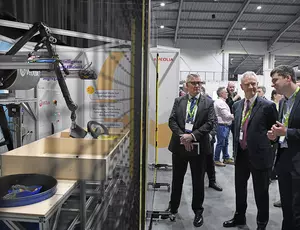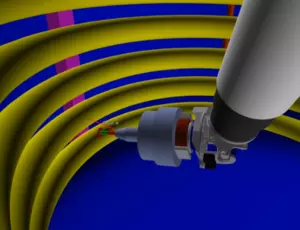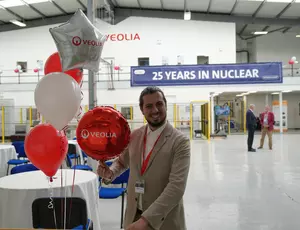The nuclear industry stands at a pivotal moment. After over 75 years of scientific and technological progress in nuclear power generation, we now have the opportunity to leverage cutting-edge artificial intelligence (AI) and machine learning (ML) capabilities to further enhance safety, efficiency, and innovation. However, the unique constraints of nuclear environments present significant challenges for AI adoption that require thoughtful solutions.
While AI adoption in the nuclear sector is still in its early stages compared to many other industries, it is gradually gaining momentum, focusing on areas such as predictive maintenance, operational optimisation, and enhanced safety. Despite regulatory challenges and data limitations, interest and investment in nuclear AI applications are growing, with major operators, research institutions, and tech companies collaborating to develop specialised solutions that meet the industry’s unique requirements.
As a leader in nuclear decommissioning and waste management solutions, Veolia Nuclear Solutions (VNS) has been at the forefront of exploring how to integrate AI effectively into nuclear applications for many years. Through our research and development initiatives, we have gained valuable insights into both the obstacles and opportunities of AI in this sector.

Simon Delavalle, Chief Technical Officer, Veolia Nuclear Solutions
The Nuclear AI Challenge
While many industries have rapidly adopted AI and ML technologies, the nuclear sector faces several barriers to implementation:
Safety and Reliability: The critical nature of nuclear operations requires extremely high standards for safety and reliability. The non-deterministic nature of many AI models presents challenges for validation and verification at the level required.
Infrastructure Limitations: Many nuclear sites have restricted connectivity and security protocols, limiting the ability to leverage cloud computing or external servers for AI processing.
Radiation Effects: Harsh radiation environments can damage or interfere with electronic sensors typically used to gather input data for AI applications.
Data Scarcity: The unique and sometimes classified nature of nuclear facilities means there is often a lack of relevant training data for AI models.
Equipment Differences: Nuclear sites often use specialised or legacy equipment not found in other industries, limiting the transferability of existing AI solutions.
Overcoming these challenges requires innovative approaches tailored to the nuclear context. At VNS, we focus on developing and integrating technologies that provide real value in the field. With this mission, outlined below are just two R&D programmes we have developed, looking at deploying AI in the nuclear sector
1. Enhancing Remote Operations with AI-Powered Vision
Remote handling in high-radiation areas is critical for nuclear operations and decommissioning. Operators rely on limited 2D camera views, making it difficult to gauge depth and spatial relationships. VNS partnered with AI experts at Fieldbox to develop a vision system that can estimate depth from a single 2D colour camera in real-time.
This project revealed several important lessons:
Existing AI models required significant retraining to perform well in nuclear environments. The unique equipment and scenarios were very different from the data these models were originally trained on.
Simulated training data was essential to supplement the limited real-world nuclear data available. However, a hybrid approach combining both simulated and real data produced the best results.
Radiation-induced noise in camera images could be mitigated through denoising techniques without significantly impacting depth estimation performance.
Real-time processing with low latency was achievable, opening the door for practical implementation in remote handling scenarios.
This project demonstrated the potential for AI to enhance operator situational awareness and reduce cognitive load during complex remote handling tasks.
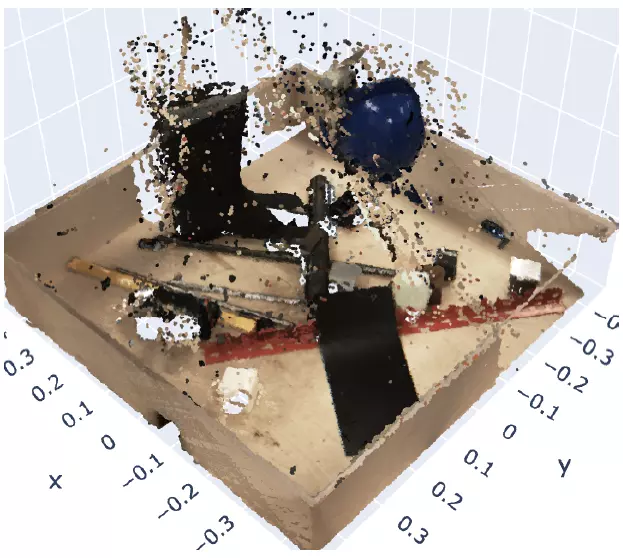
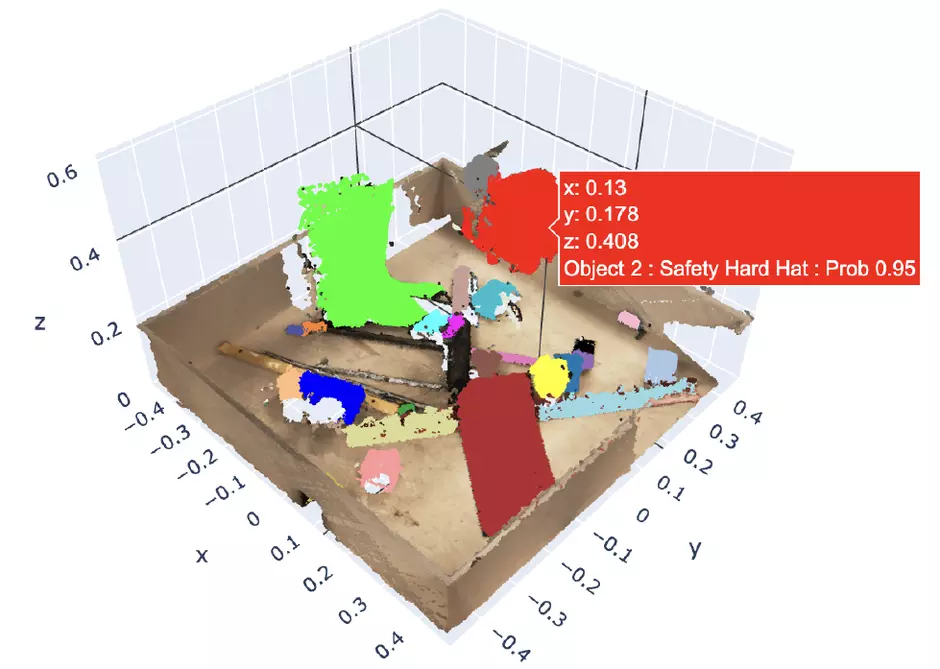
2. Autonomous Waste Sorting with Multi-Modal AI
Efficient sorting and categorisation of nuclear waste is another area that seems ideal for AI-powered innovation. After all, AI has been deployed effectively in waste sorting and recycling businesses.
VNS partnered with Faculty AI to develop a demonstration system for autonomous sorting of legacy Low Level Waste (LLW) and Intermediate Level Waste (ILW) items. This project integrated multiple AI capabilities including object detection, material classification, and decision-making algorithms.
However, it wasn’t a simple “copy/paste” from existing modern systems. Some of the challenges and key insights from this development include:
There isn’t sufficient data volume from the nuclear sector. Our training approach required a combination of limited real-world objects as well as simulated data. Combined with 3D scanning, this hybrid model showed good performance even on previously unseen items.
Radiological characteristics are key but cannot easily be tested in a lab. We injected simulated radiological data for the development of waste categorisation algorithms without requiring access to actual radioactive materials.
Complex decision trees incorporating probabilistic estimations from multiple AI models were necessary to align with industry waste segregation practices.Human-in-the-loop capabilities are essential for handling edge cases and ensuring proper oversight of critical decisions - no personnel can access to assist the system!
Integration with robotic systems for autonomous manipulation required additional AI capabilities for grasp planning and object handling.
Accuracy of the AI system is crucial for the nuclear sector: 80% or 90% might be acceptable for other waste businesses, but nuclear waste segregation requires much higher certainty.
This project showcased how multiple AI technologies can be combined to tackle complex nuclear industry challenges, paving the way for more efficient and safer waste management processes.
The Path Forward for AI in Nuclear
The integration of AI in nuclear operations holds great promise, but presents challenges. The nuclear industry must foster a culture of collaboration and open data sharing to ensure that AI solutions are robust and widely applicable.
Many endeavours are already underway to deploy AI systems for the design and operation of nuclear powerplants, from optimising facilities for safety and efficiency to real-time and predictive monitoring of plant conditions.
Furthermore, AI could be deployed today for maintenance and decommissioning, combined with robotics and vision systems, to dramatically reduce human exposure to radiation, and improve precision and speed of complex tasks.
However, realising this vision requires careful management of risks, such as over-reliance on AI, integration with cybersecurity architecture, and dealing with limited data. Education and workforce development are also critical, as the nuclear professionals of tomorrow will need to be well-versed in both nuclear science and data science.
New ethical and policy considerations must also be addressed, such as ensuring transparency and accountability in AI decision-making processes and balancing autonomy and human oversight in critical operations. Regulatory bodies, such as the UK’s Office for Nuclear Regulation and the U.S. Nuclear Regulatory Commission, play a crucial role in ensuring AI adoption enhances rather than compromises nuclear safety.



